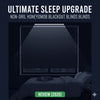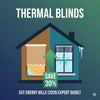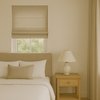Slat Blinds vs. Solid Panels: Which Offers Better Light Control?
- by Giorgi Gogidze

Slat blinds and solid panels both serve as window coverings, but they function in very different ways.
-
Slat Blinds (Venetian or vertical): Made up of adjustable slats that tilt to control light.
-
Solid Panels (shutters or panel tracks): Large, non-adjustable sections that fully cover windows when closed.
The main difference lies in flexibility versus total coverage.
[toc]
Light Control with Slat Blinds
Slat blinds excel at precision. You can tilt the slats to allow partial light in while maintaining privacy. This makes them ideal for:
-
Living rooms: Adjust brightness depending on the time of day.
-
Offices: Reduce screen glare without blocking natural light.
-
Bedrooms: Pair with curtains for more versatile light control.
They give you full flexibility, from fully open to partially closed.
Light Control with Solid Panels
Solid panels provide all-or-nothing coverage. When closed, they completely block out light, creating a darkened, private space. When open, they let in full daylight. This makes them perfect for:
-
Media rooms: For watching movies without glare.
-
Bedrooms: Especially effective when paired with blackout materials.
-
Large patio doors: Easy to slide open fully for natural light.
Privacy Considerations
-
Slat blinds: Provide adjustable privacy but may leave small gaps when tilted.
-
Solid panels: Offer total privacy when closed, but none when fully open.
Your choice depends on whether you prefer flexibility or complete separation.
Which Is Best?
-
Choose slat blinds if you want fine control over lighting and enjoy versatility.
-
Choose solid panels if your main goal is maximum privacy and blackout capability.
Final Thoughts
Both slat blinds and solid panels have their advantages. For multifunctional rooms, slat blinds are the smarter choice, while for spaces where complete darkness is essential, solid panels are the way to go. Ultimately, your lifestyle and room use should guide your decision.







